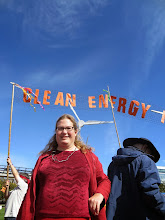When we discuss energy storage with batteries, one question that often comes up is the energy cost of mining the metals, building and transporting the battery, and so forth. Some claim "it takes more energy to make a battery than the battery actually stores". For Lead-Acid batteries this is very nearly true, but other technologies do better, according to a Stanford study sponsored by ExxonMobil, GE, Schlumberger, and DuPont (not exactly the rose-colored glasses crowd).
This group developed a metric called "Energy Stored on Energy Invested", measuring the ratio of the amount of energy stored during the battery's life to its lifecycle energy cost. Lead-Acid batteries have and ESOI of only two (they store only twice the energy they cost to make), and Lithium-ion batteries do much better at an ESOI of 10. Both pumped hydro and compressed air energy storage (CAES) score over 200 - pumped hydro storage is restricted by geology and ecological factors, and CAES has a fairly low round-trip efficiency.
The longer a battery lasts, the more total energy it can store in its life and the higher its ESOI will be. Some Nickel-Iron batteries can last many decades, and so could score very high on such a measure. I'd be interested in the score for the new utility scale zinc-air batteries.
Read the article at Eurekalert
Subscribe to:
Post Comments (Atom)


No comments:
Post a Comment